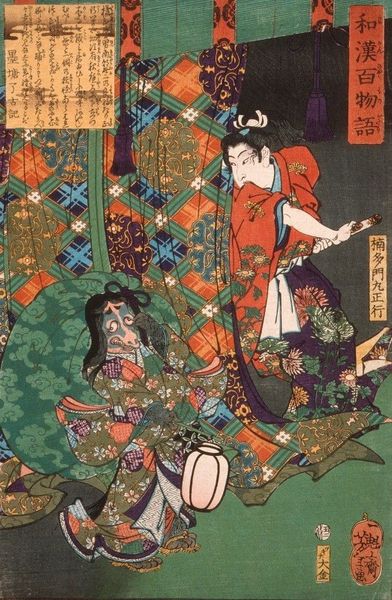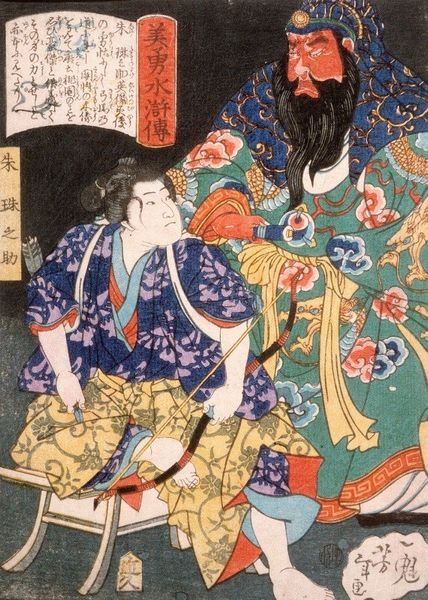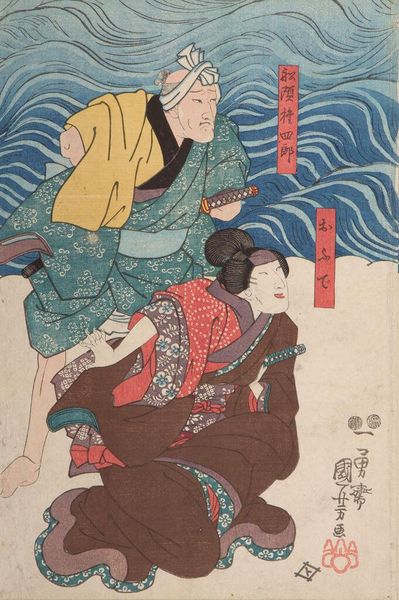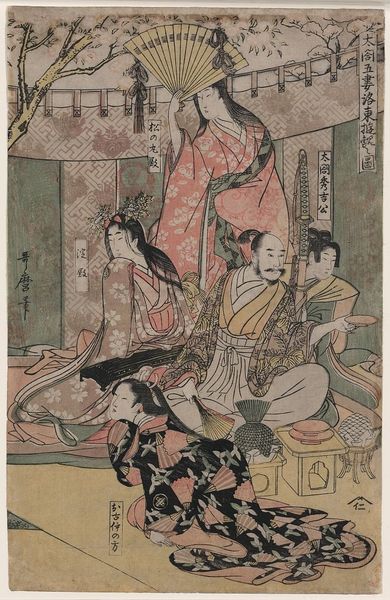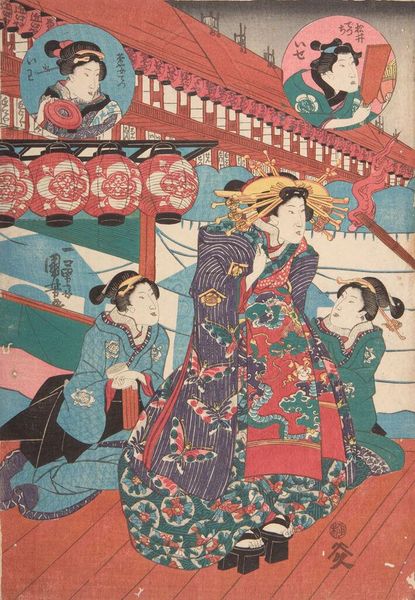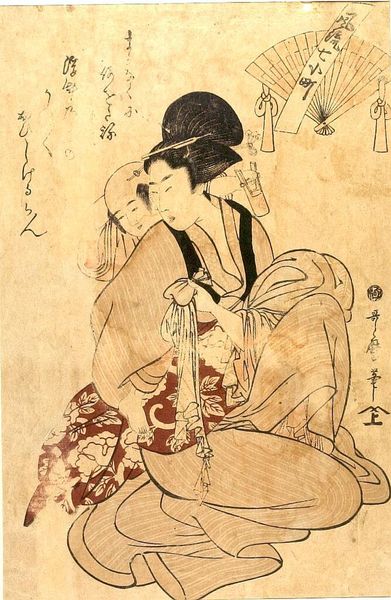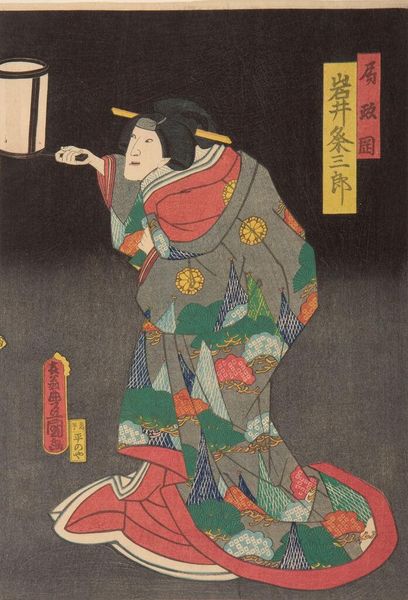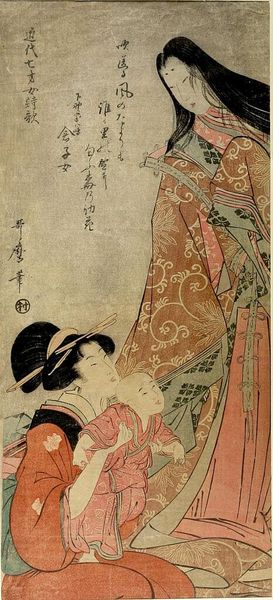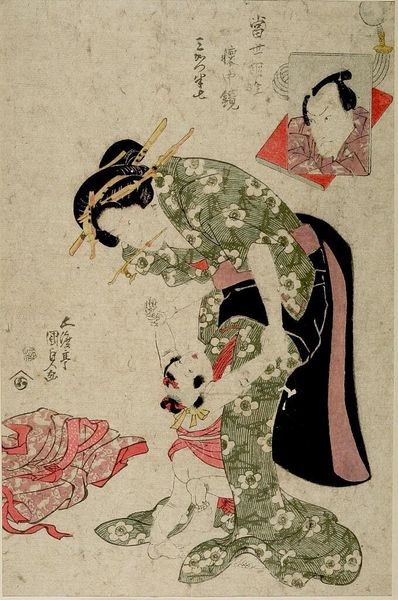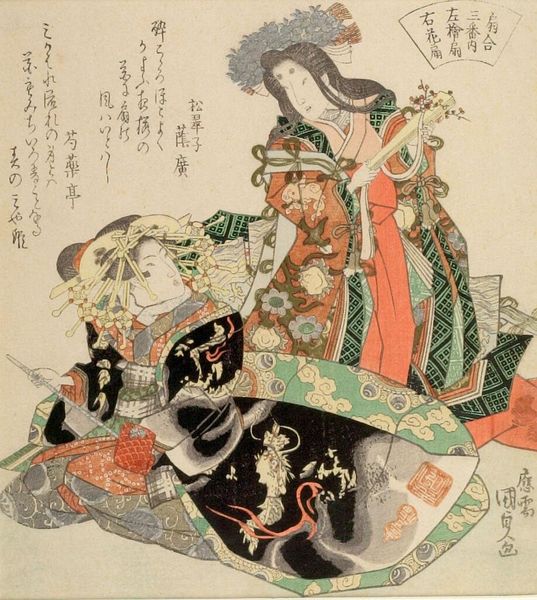
Kamuro with Shamisen and Kamuro(?) with Fan, from the series Fūryū kodomo asobi c. 19th century
0:00
0:00
Dimensions: Paper: H. 32.9 x W. 23.1 cm (12 15/16 x 9 1/8 in.)
Copyright: CC0 1.0
Curator: This print, attributed to Kitagawa Utamaro II, depicts two figures titled "Kamuro with Shamisen and Kamuro(?) with Fan," part of the "FÅ«ryÅ« kodomo asobi" series, rendered on paper. Editor: The colors are muted, giving it a warm, aged feeling. It feels intimate, almost like a secret glimpse into a private moment. Curator: Utamaro's series often references classical themes. The Kamuro, young attendants in the pleasure quarters, become symbols of ephemeral beauty and the performative aspects of culture. Editor: Absolutely. The choice of woodblock printing also speaks volumes. Each impression varies, bearing the subtle marks of labor and the artist's direct hand. Curator: The shamisen, a three-stringed instrument, traditionally accompanies dramatic narratives. We can consider the possible symbolic meaning of performance, social expectation, and even childhood innocence. Editor: It’s more than just ink on paper; it’s a record of process and cultural exchange, a material artifact that tells a broader story of production and consumption. Curator: Indeed. These images remind us of the enduring power of visual storytelling. Editor: And how art can offer a rich tapestry for us to explore materials and our shared humanity.
Comments
No comments
Be the first to comment and join the conversation on the ultimate creative platform.
